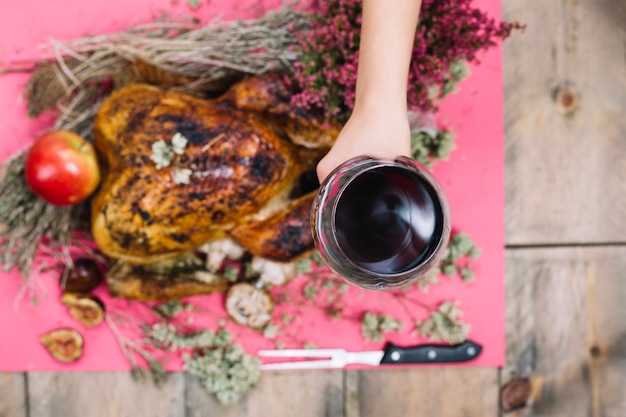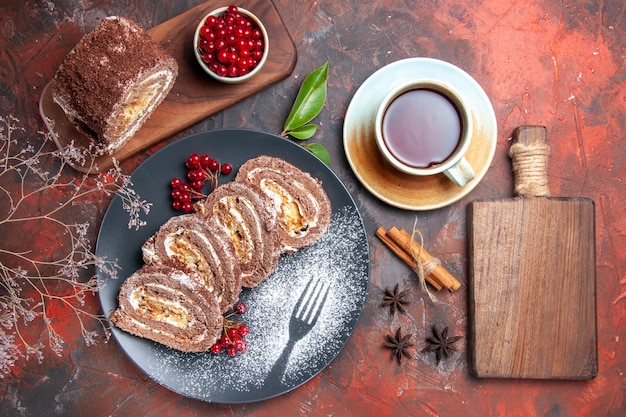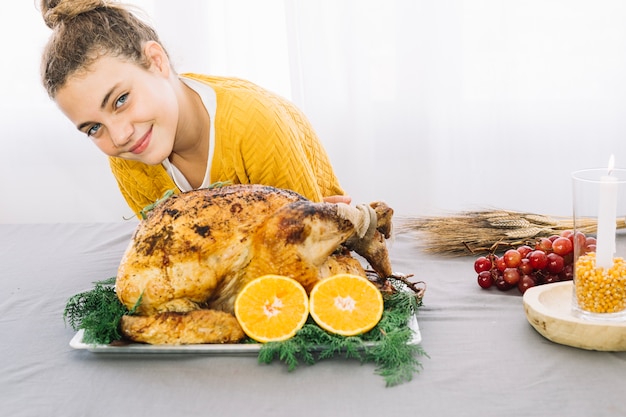Let’s be honest, there’s nothing quite like a perfectly roasted turkey breast. The crispy skin, the succulent meat, the irresistible aroma that fills your home... it’s a culinary masterpiece that makes any occasion feel special. But achieving that juicy, flavorful result can feel a bit daunting, especially if you’re not a seasoned cook. Fear not, my friends! I’m here to guide you through the process step-by-step, sharing my secrets to unlocking the secrets of a truly remarkable turkey breast roast.
(Part 1)Choosing the Right Bird: A Foundation for Success

The first step to a delicious turkey breast roast is selecting the right bird. You’ve got two primary choices: a whole turkey breast or a boneless, skin-on turkey breast. Each has its own advantages, so let’s break down the pros and cons.
Whole Turkey Breast: A Classic Choice
A whole turkey breast is a traditional option, containing the entire breast section of the turkey, bone and all. This method offers a classic roasting experience, resulting in a turkey with a slight crispy skin. However, carving a whole breast can be a bit trickier, and it tends to take longer to cook.
Boneless, Skin-on Turkey Breast: Convenience and Flavor
This is my personal favorite! Boneless turkey breasts are incredibly convenient, allowing for easy carving. They also cook faster, making them a great option for busy weeknights. The skin, when roasted properly, delivers that irresistible crispy texture, while the bonelessness ensures a juicy and tender interior.
Preparation: Setting the Stage for Flavor

Now that you've chosen your turkey breast, it’s time to get down to business. The preparation phase is crucial for achieving that melt-in-your-mouth texture and ensuring a burst of flavor in every bite.
Brining: Unlocking Juicy Tenderness
Let’s talk about brining, a secret weapon for creating a juicy, flavorful turkey. It involves soaking the turkey in a saltwater solution, which helps retain moisture and infuse the meat with a savory flavor.
I always recommend brining, especially if you're using a whole turkey breast. It’s a game changer! For a basic brine, you'll need:
- 1 gallon of water
- 1 cup kosher salt
- 1/2 cup brown sugar
- 1 tablespoon black peppercorns
- 1 tablespoon dried thyme
- 1 bay leaf
Simply dissolve all the ingredients in the water, then submerge the turkey breast in the brine for 4-6 hours, or overnight for the ultimate juiciness. Remember to keep the turkey refrigerated during the brining process.
Pat Dry: The Key to Crispy Skin
Once you’ve brined your turkey breast (if you choose to), pat it dry. This step might seem simple, but it’s essential for achieving that irresistible, crispy skin.
Take your turkey breast out of the brine, rinse it thoroughly with cold water, and pat it dry with paper towels. You want to make sure there’s no excess moisture lingering, as it can prevent the skin from browning properly.
Seasoning: A Flavor Explosion
Now, for the fun part: seasoning! This is where you can unleash your culinary creativity. There are no hard and fast rules here, but here are some of my favourite combinations for turkey breast:
- Simple and Classic: A sprinkle of salt, pepper, and a touch of paprika for a warm, inviting flavour.
- Herby Delight: A blend of rosemary, thyme, sage, and garlic for an aromatic, earthy flavour that will tantalize your taste buds.
- Citrus Kick: Lemon zest, orange zest, and a hint of black pepper for a bright, tangy flavour that will awaken your senses.
- Spicy Heat: Cayenne pepper, smoked paprika, and cumin for a kick of heat that will add a satisfying element to your roast.
Season generously, both under the skin (if you're using a whole breast) and on the outside, and rub it in well. This will ensure the flavour penetrates throughout the turkey, making every bite a delicious experience.
(Part 2)The Roasting Process: Guiding Your Turkey to Perfection

Alright, let’s get this turkey roast into the oven! I've got a foolproof method that’ll guarantee success.
Get Your Oven Ready: The Importance of Preheating
First things first, preheat your oven to 325°F (165°C). This will ensure that your turkey breast cooks evenly, developing a beautiful golden-brown colour and a crispy exterior.
The Roast: Time to Shine
Grab a large roasting pan and place your seasoned turkey breast inside. If you're using a whole turkey breast, consider placing it on a roasting rack to allow for better air circulation and even cooking. But, for boneless breasts, a roasting pan will suffice.
Next, pour about 1/2 cup of chicken broth or water into the bottom of the pan. This will create a nice steam that helps keep your turkey breast moist and tender.
The cooking time: A Balancing Act
Cooking time will vary depending on the size and type of turkey breast you're using. But, as a general rule, aim for about 20-30 minutes per pound for a whole turkey breast. For boneless, skin-on breasts, you can reduce that to 15-20 minutes per pound.
However, don't rely solely on time! To ensure your turkey is cooked perfectly, you’ll need to use a meat thermometer. Insert the thermometer into the thickest part of the turkey breast, making sure not to touch the bone. Your turkey is done when it reaches an internal temperature of 165°F (74°C).
Basting: Adding Moisture and Enhancing Flavor
For a truly exquisite roast, consider basting the turkey breast every 30-45 minutes during cooking. This will help keep it moist, prevent drying, and develop that beautiful golden-brown crust. To baste, simply use a spoon to ladle some of the juices from the bottom of the pan over the turkey.
Resting Time: Resting for Juiciness
Once your turkey reaches the desired temperature, remove it from the oven and let it rest for 15-20 minutes before carving. This will allow the juices to redistribute throughout the meat, making for a more succulent and flavorful turkey.
Carving: Time to Enjoy!
Now, for the grand finale: carving. Use a sharp carving knife to slice the turkey breast into thin, even slices. If you’re using a whole turkey breast, you'll need to remove the bone first. But, with boneless breasts, it's as simple as slicing.
(Part 3)flavor enhancers: Elevating Your Turkey Roast
You've got a perfectly cooked turkey breast, but let's take it up a notch and add some flavour-boosting elements. These little additions will transform your turkey roast into a truly memorable dish.
Stuffing: A Classic Companion
Let's face it, stuffing is the ultimate turkey sidekick. It adds a delicious contrast of texture and flavour to your roast. Whether you prefer a traditional bread-based stuffing or a more modern, creative twist, stuffing is a delightful addition to any turkey dinner.
Here are a few stuffing ideas to get your creative juices flowing:
- Classic Bread Stuffing: A simple combination of bread cubes, celery, onions, herbs, and broth.
- wild rice Stuffing: A more hearty stuffing with wild rice, cranberries, walnuts, and herbs.
- Sausage Stuffing: A savoury stuffing with sausage, apples, and sage.
If you're using a whole turkey breast, you can stuff the cavity with your chosen stuffing. For boneless breasts, you can cook the stuffing separately in a casserole dish.
Gravy: The Finishing Touch
No turkey roast is complete without a rich, flavorful gravy. It's the perfect way to capture all those delicious pan drippings and create a sauce that will elevate your entire meal.
You can make a gravy using the pan drippings from your roast. Just strain the drippings to remove any fat or solids, then whisk in flour and broth to thicken the sauce. Add salt, pepper, and any other herbs or spices to taste.
Here's a simple recipe for a classic turkey gravy:
- 2 tablespoons butter
- 2 tablespoons all-purpose flour
- 2 cups turkey broth
- 1/2 teaspoon salt
- 1/4 teaspoon black pepper
Melt the butter in a saucepan over medium heat. Whisk in the flour and cook for 1 minute, stirring constantly. Gradually whisk in the broth until smooth. Bring to a boil, then reduce heat to low and simmer for 5 minutes, stirring occasionally. Season with salt and pepper to taste.
Sides: Complementary Flavors
Of course, no meal is complete without sides. These can be as simple or as elaborate as you like. Here are a few ideas that pair perfectly with turkey breast:
- mashed potatoes: A creamy and comforting classic.
- green bean casserole: A festive and flavorful side dish.
- Cranberry Sauce: A tart and tangy counterpoint to the savory turkey.
- Roasted Vegetables: A colorful and healthy option.
Troubleshooting: Overcoming Common Challenges
Let's face it, sometimes things don't go as planned in the kitchen. Even experienced cooks face challenges. Here are some common turkey breast problems and solutions to help you navigate any hiccups along the way.
Dry Turkey Breast: Preventing and Remedying
A dry turkey breast is a common problem, especially with whole breasts. The most effective way to prevent this is to brine the turkey before roasting.
If your turkey breast is already dry, you can try adding some liquid to the roasting pan. You can also baste the turkey more frequently during cooking.
Burnt Skin: Achieving the Perfect Golden Brown
You've all been there. You're aiming for a nice, golden-brown skin, but it ends up burnt instead. This can happen if the oven is too hot or if the turkey is cooked for too long.
If you see that the skin is starting to brown too quickly, you can cover the turkey breast with foil for part of the cooking time. This will help prevent the skin from burning while still allowing the meat to cook.
Undercooked Turkey: Ensuring food safety
No one wants to eat undercooked turkey. It's important to check the internal temperature of your turkey breast with a meat thermometer to ensure it's cooked through.
If your turkey is undercooked, you'll need to return it to the oven and cook it for a bit longer. Check the temperature regularly until it reaches the desired internal temperature of 165°F (74°C).
(Part 5)Leftover Magic: Transforming Your Turkey Breast into New Dishes
You've roasted a magnificent turkey breast, but you're left with leftovers? Don’t despair! Leftover turkey breast is a blank canvas for a whole host of delicious dishes.
turkey salad Sandwiches: A Classic comfort food
This is a classic for a reason. Simply shred or dice the leftover turkey, combine it with mayonnaise, celery, onion, and seasonings, and enjoy it on your favourite bread.
turkey soup: Warm and Satisfying
Turn your leftover turkey into a comforting and flavorful soup. You can add vegetables, noodles, or rice to make it even more satisfying.
turkey pot pie: A Hearty and Delicious Option
Combine leftover turkey with a creamy sauce, vegetables, and a flaky pie crust for a delicious and hearty pot pie.
Turkey Enchiladas: A Fusion of Flavors
Get creative with Mexican flavours! Shred the turkey, combine it with a spicy sauce, and wrap it in tortillas with cheese and your favourite toppings.
Turkey Pizza: A Fun and Easy Meal
A fun and easy way to use up leftover turkey. Simply add sliced turkey, your favourite toppings, and a sprinkle of cheese to your pizza crust. Bake until the cheese is melted and bubbly.
(Part 6)Turkey Breast Roast: A Versatile Feast
The beauty of a turkey breast roast is its versatility. It can be the centrepiece of a grand holiday feast or a simple weeknight dinner. Here are a few ideas to inspire your culinary creativity.
thanksgiving feast: A Traditional Delight
A turkey breast roast is a classic choice for Thanksgiving. Serve it alongside mashed potatoes, gravy, stuffing, and cranberry sauce for a traditional and satisfying meal.
Christmas Dinner: A Festive Option
A turkey breast roast can also be the star of your Christmas dinner. Pair it with roasted vegetables, a creamy mushroom sauce, and your favourite Christmas sides.
Weekend Brunch: A Hearty Treat
For a special weekend brunch, you can serve a turkey breast roast with breakfast-inspired sides like sweet potato hash, fluffy pancakes, and maple syrup.
Weeknight Dinner: A Quick and Easy Option
A turkey breast roast is a great choice for a weeknight dinner. You can cook it in advance and slice it up for sandwiches, salads, or a quick and easy dinner.
(Part 7)Wine Pairings: Complementary Flavors
No delicious meal is complete without a good wine pairing. Here are a few suggestions for wines that complement the flavour of turkey breast:
White Wines:
- Pinot Grigio: A light and crisp white wine with a touch of fruitiness, perfect for cutting through the richness of the turkey.
- Sauvignon Blanc: A refreshing and grassy white wine with citrus notes, offering a delightful contrast to the savory flavors.
- Chardonnay: A fuller-bodied white wine with notes of butter and oak, a perfect pairing for a more robust turkey breast recipe.
Red Wines:
- Pinot Noir: A light-bodied red wine with cherry and earthy flavours, a subtle and elegant complement to turkey.
- Zinfandel: A fruit-forward red wine with notes of jam and spice, offering a bolder flavor profile that can stand up to the richness of turkey.
FAQs: Your Turkey Breast Questions Answered
I know you might have a few lingering questions about turkey breast roasts. Here are some common ones, along with detailed answers.
1. Can I Use frozen turkey Breast for Roasting?
Yes, you can use frozen turkey breast for roasting. Just make sure to thaw it completely in the refrigerator before roasting. This usually takes about 24 hours for a whole turkey breast or 12 hours for a boneless breast.
2. How Long Can I Store Leftover Turkey Breast?
Store leftover turkey breast in the refrigerator for up to 3-4 days. You can also freeze it for up to 2-3 months. Just wrap it tightly in plastic wrap or aluminum foil.
3. Can I Roast a Turkey Breast with the Skin On?
Yes, you can roast a turkey breast with the skin on. In fact, it's highly recommended! The skin will crisp up beautifully and add a layer of delicious flavour to the turkey.
4. What Happens if I Overcook a Turkey Breast?
If you overcook a turkey breast, it will become dry and tough. This is why it's essential to use a meat thermometer and cook the turkey to the proper internal temperature.
5. How Can I Prevent My Turkey Breast From Sticking to the Roasting Pan?
To prevent your turkey breast from sticking to the roasting pan, you can use a non-stick roasting pan or spray the pan with non-stick cooking spray. You can also place the turkey breast on a roasting rack to allow for better air circulation.
Well, there you have it, my friends! A comprehensive guide to crafting the perfect turkey breast roast. Now go forth and conquer the kitchen! And remember, don't be afraid to experiment with flavors and techniques. With a bit of practice, you'll be turning out juicy, delicious turkey breast roasts that will impress even the most discerning palates.
Everyone is watching

How to Cook Frozen Lobster Tails Perfectly: A Step-by-Step Guide
RecipesLobster. Just the word conjures up images of lavish meals, special occasions, and a taste of luxury. But let's...

Pigs in a Blanket Cooking Time: How Long to Bake for Perfect Results
RecipesAh, pigs in a blanket. Just the name conjures up images of those delightful little parcels of crispy pastry en...

Pork Fillet Cooking Time: How Long to Cook It Perfectly
RecipesPork fillet, or tenderloin as it's sometimes called, is a real favourite in our house. It's so versatile, and...

The Ultimate Guide to Tender, Juicy Pulled Pork
RecipesRight, let's talk pulled pork. It's one of those dishes that just screams "comfort food," doesn't it? I mean...

The Ultimate Guide to Cooking Delicious Frankfurters
RecipesLet's face it, we all love a good frankfurter. It's a classic, simple, and always satisfying. But let's be rea...
